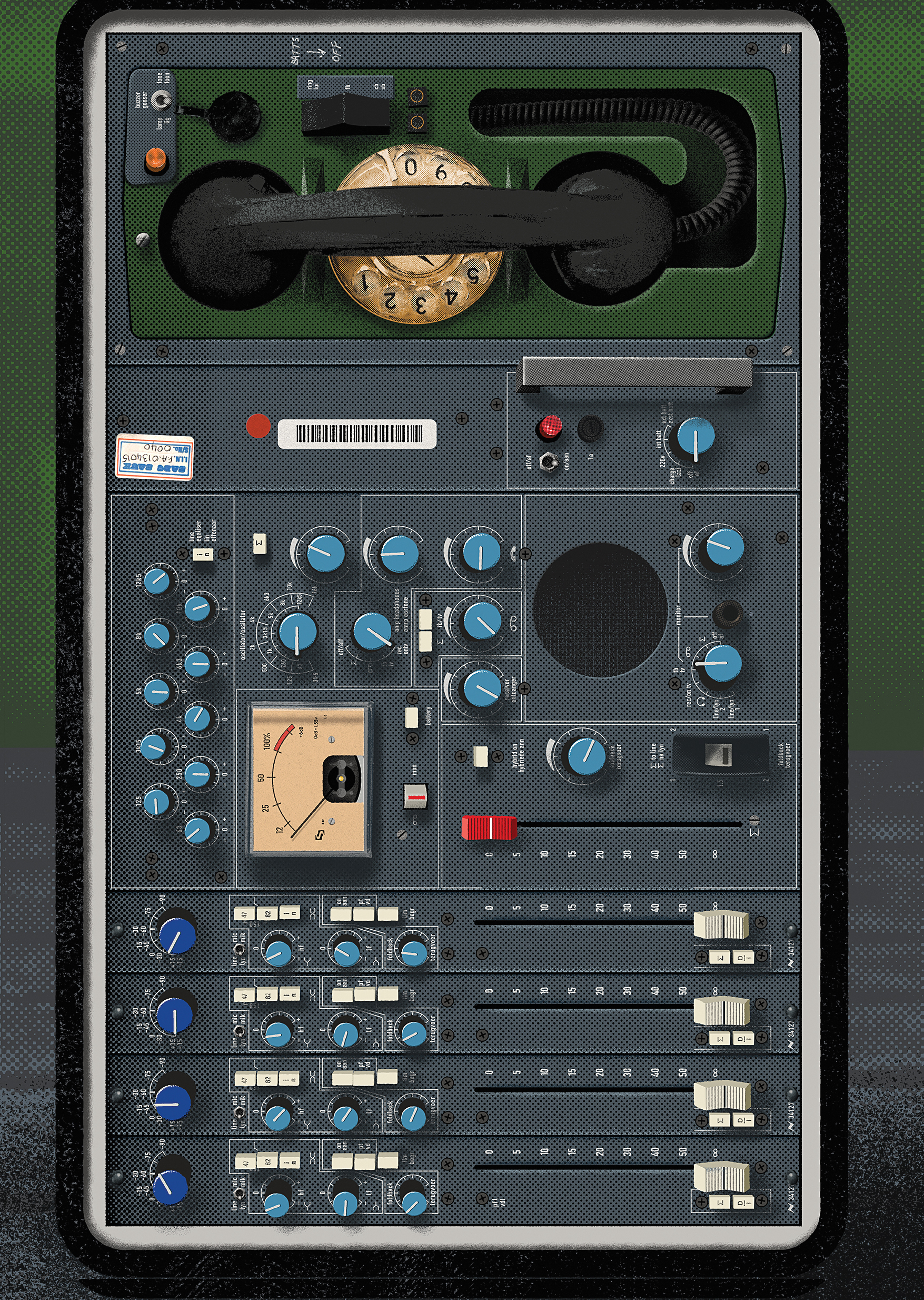I’m nearing the end of a search for a new monitoring setup in my small home studio (aka spare bedroom). I fell in love with the ADAM Audio A7Vs [Tape Op #153] and a matching subwoofer Sub10 MK2 [#156]. I learned the hard way that my nearfield monitors did not stand a chance in my less-than-optimal room thanks to low-frequency resonances and cancellations (not any fault on the part of the monitors). However, I was curious to know if I really needed such a powerful subwoofer, especially since I typically work at moderate levels, and because I didn’t want to spend any more money than necessary. I’m sure manufacturers have good reason to suggest that you stick with their recommended pairings, but I have no qualms about changing things up. Thus, I asked the kind folks at ADAM if I could test the less expensive T10S (designed to complement their T5V and T7Vs [#128]) with my A7V nearfields.
The T10S includes both XLR (balanced) and RCA (unbalanced) inputs and outputs. While balanced cables are a better choice for the studio, I appreciated that I could plug the T10S into my home stereo with consumer RCA cables. We’re big fans of La Luz in my house, and their new record (mixed by Maryam Qudus [Tape Op #148]) sounded bigger and warmer than ever before with the T10S, fully revealing the intricacies of Lena Simon’s amazing bass lines. Freed from the struggle to reproduce low frequencies, my stereo speakers never sounded better. The T10S gives the option of crossover frequencies at 80 Hz or 120 Hz for a combined 2.1 setup, or bypassed for independent subwoofer use/calibration or external crossover use. I plugged my home stereo speakers into the T10S and set the crossover at 80 Hz. It should be noted that the frequency range of the T10S is 28 Hz to 120 Hz, so it’s nice to have the bypass option to take advantage of its full range.
Then I moved the T10S into my studio and integrated it into my monitoring chain. The T10S offers enough gain for my purposes, though I did turn the volume knob up about three-quarters past the 0 dB mark to get it to a similar level as my main monitors. My first impression was that the low frequencies blended well with my nearfields without popping out. I couldn’t hear the location of the T10S, which is good, but it does have a Phase (polarity) switch for those with odd monitoring arrangements. Trying to balance kick drum and bass is so much easier with the T10S in your monitoring chain, but it also reveals the full range of synths, organs, and other keyboard instruments. The T10S is well-built and sturdy but small enough to fit in my cramped bedroom. I also appreciate that the T10S has a down-firing 10-inch woofer that I can’t accidentally kick in when it’s under my desk. Four rubber feet keep the T10S from exciting the floor too much. Because I mix in my house and can’t always make a racket, the remote bypass (via a footswitch connected by 1/4-inch cable) is a thoughtful addition as well.
I’m impressed by ADAM Audio’s commitment to making excellent products at a range of price points. And at less than $400, the T10S holds its own against more expensive options. If you’re monitoring with nearfields and haven’t tried adding a subwoofer yet, I would highly recommend auditioning the T10S. It will make life significantly easier for bedroom producers, home recording aficionados, and anyone mixing with nearfields in a small room. I don’t want to send mine back!




_disp_horizontal_bw.jpg)